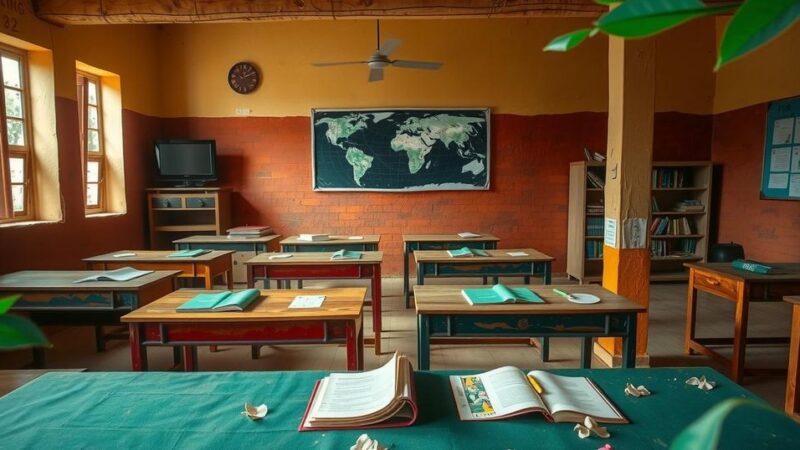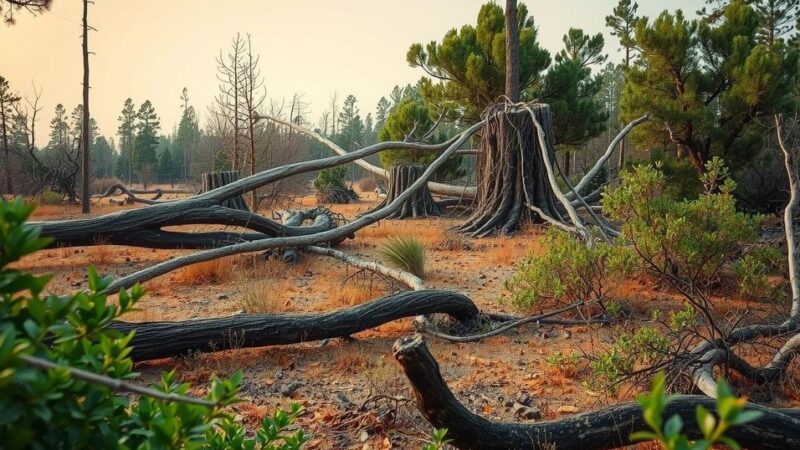Research has disproven claims that a 2024 earthquake in Iran was caused by a nuclear test. The study emphasized the role of misinformation during international crises. The quake was determined to be a natural event resulting from geological activity in a seismically active area, not a nuclear event as speculated in media and social networks.
Recent research has clarified that a significant earthquake in Iran was not caused by a nuclear test, as previously feared. The 4.5 magnitude quake that occurred on October 5, 2024, was mistakenly linked to a covert nuclear weapons test amidst heightening tensions in the Middle East. This American-led study, published in Seismica, emphasizes the dangers of misinterpreting scientific data during geopolitical crises.
Dr. Benjamin Fernando, a seismologist from Johns Hopkins University, expressed concern over the misinformation that surrounded this event. He noted, “There was a concerted misinformation and disinformation campaign around this event that promoted the idea this was a nuclear test, which is not something you often see happen with an earthquake.”
The earthquake originated approximately 30 miles southwest of Semnan in a seismically active zone. Through analysis of seismic signals from the event, Dr. Fernando’s team determined the cause to be natural seismic activity related to intercontinental tectonic shifts, not nuclear testing. The earthquake’s characteristics were common in prior occurrences in this region, bolstering their findings.
“Seismic waves carry information about the earthquake that produced them… By recording the waves at different points on the Earth’s surface, we can work out what the properties of the source that produced them were,” explained Dr. Fernando. The research highlighted that the seismic waves indicated a reverse fault movement, typical of colliding tectonic plates.
Despite concrete scientific evidence, claims of a nuclear test circulated rapidly on social media shortly after the earthquake. Initial tweets misconstruing seismic data sparked a misinformation wave, culminating in conspiracy theories linking this event to unrelated occurrences elsewhere. Some narratives were notably pushed by accounts involved in disinformation campaigns, particularly those associated with Russia.
The spread of misinformation escalated with coverage by various media outlets worldwide. The inaccurate claims appeared prominently in Indian English-language media, replicated across several articles referencing one another without verifying factual accuracy. Additionally, media coverage from nations such as the UK, the US, and France contributed to the dissemination of these false narratives.
The research team advocates for improved collaboration among seismologists to address misinformation swiftly. They suggest that scientific agencies should provide rapid, authoritative reports to counteract misinterpretations. Dr. Saman Karimi highlighted the importance of amplifying info from verified scientific accounts through partnerships with social media platforms and trusted agencies.
The topic centers around a significant seismic event in Iran and the ensuing controversies regarding its cause. On October 5, 2024, a 4.5 magnitude earthquake occurred near Semnan, leading to widespread speculation on social media and among various media outlets that it was linked to a clandestine nuclear testing operation by Iran. Such claims played into the broader geopolitical tensions existing in the region at that time, heightening international scrutiny and concern surrounding Iran’s nuclear capabilities.
In summary, the recent study has firmly established that the October 2024 earthquake in Iran was a natural geological occurrence, dismissing claims linking it to a nuclear test. Researchers emphasize the need for accurate communication of scientific data, especially in volatile contexts, and highlight the risks posed by misinformation. Enhanced collaboration among seismologists and rapid dissemination of accurate information are essential to prevent similar misunderstandings in the future.
Original Source: www.redwoodnews.tv






